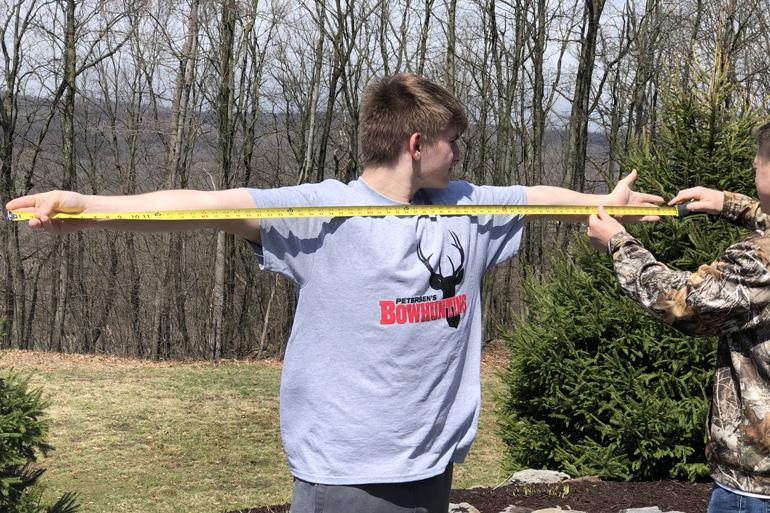How to Find Your Draw Length
How to Measure Your Draw Length
If your bow isn't properly set up for your draw length, consistent accuracy will be nearly impossible to attain.

In archery, consistency is the key to accuracy. However, maintaining consistent form from shot to shot is difficult, if not impossible, if your bow's draw length isn't properly set to fit your body.
If your draw length is too short, you'll be forced to hunch up to see through your peep sight. And if your draw length is too long, you'll be forced to stretch and strain to get the bowstring all the way back and hold it there. Either way, you'll be putting your body in some unnatural positions during the aiming process and struggle to shoot tight arrow groups. And you certainly won't be able to maintain the classic "T-form" archery coaches teach, with your rear (holding) arm directly in line with the arrow at full draw.
Although draw-length is a basic setting on compound bows, pro shop owners say it is surprising how many long-time shooters neglect the importance of determining their proper draw length and making sure their bow is calibrated accordingly. This can be particularly common when people purchase used bows or bows are shared among friends and family members.
So, how do you figure out your correct draw length? Well, the answer is quite simple, and in fact, the entire process only takes about a minute. First, find a measuring tape and someone to help you. Next, stand up straight and spread your arms out wide. Hold that position while your helper takes a measurement of your wingspan between the fingertips of your middle fingers. Finally, take that measurement and divide by 2.5 to determine your proper draw length.
The result of this simple exercise should get you very close to your correct draw length, though some fine-tuning may still be needed. Most bows allow for draw-length to be adjust in half-inch increments. If your bow has a rotating module, changing draw length can typically be accomplished simply be removing a couple screws, turning the module to the appropriate setting and re-inserting the screws. If you have a bow with draw-length specific cams, you may need to contact your local dealer to order new cam modules for the appropriate draw length.
Either way, make sure your bow is set as close to your exact draw length as possible and then make any needed revisions from there. Remember, you want to find the draw length that allows you to comfortably pull the bowstring back while maintaining good posture, with your head held up straight and your rear (holding) elbow in line with and pointing straight away from the arrow. You can easily check this by having a friend stand behind you at full draw and watch your alignment.
Even small adjustments can make a big difference in your shooting consistency. So, if things still don't feel quite right, consider making smaller (less than half an inch) draw-length adjustment via the limb or cable stops on your cams, or by changing the length of your nocking loop. If you feel you need a little more draw length, simply tie on a longer nocking loop. And if you want to shorten your draw length, use a shorter nocking loop.
That's all there is to it! Determining your correct draw length isn't hard, and getting your bow adjusted just right for you isn't too time consuming. However, this small step is huge when it comes to your shooting form and accuracy.
Source: https://www.bowhuntingmag.com/editorial/how-to-measure-your-draw-length/374942
0 Response to "How to Find Your Draw Length"
Post a Comment